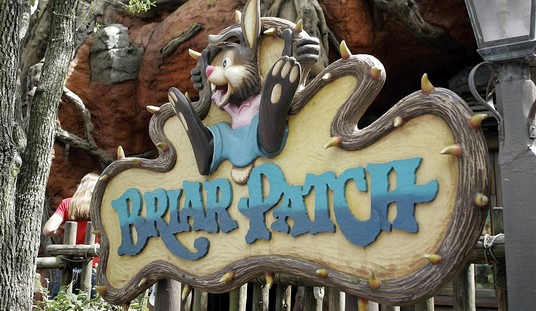Gallup toplines its year-on-year average in the partisan identification gap, and suggests that the big story is that Democrats fell below a majority of support for the first time in three years. That’s an interesting trend, but Gallup then also notes that the averaging obscures an even more pronounced trend during the year which took Democrats from a 13-point advantage all the way down to five points:
The year 2009 marked the end of a three-year run of majority Democratic support among U.S. adults. Last year, an average of 49.0% of Americans identified as Democrats or said they leaned Democratic, the party’s first yearly average below 50% since 2005. Still, Democrats maintained an average eight-point advantage in support over Republicans last year, as 40.7% of Americans identified as Republicans or leaned Republican.
The 2009 results are based on aggregated data from all Gallup and USA Today/Gallup polls conducted last year, encompassing interviews with more than 21,000 Americans. In each poll, Gallup asks Americans whether they consider themselves Republicans, Democrats, or independents. Independents are subsequently asked if they lean to the Republican or Democratic Party.
The 2009 yearly averages do not tell the whole story of changes in party support last year, as they to some degree obscure the sharp decline in the Democrats’ advantage over the course of the year. In the first quarter of 2009, coincident with the beginning of the Obama administration, Democrats enjoyed one of the largest advantages for either party since 1991, 13 percentage points (51.7% of Americans identified as Democrats or leaned Democratic, versus 38.7% who identified as or leaned Republican). In each subsequent quarter, the percentage of Democratic supporters declined, and by the fourth quarter, the Democratic advantage had shrunk to 5 points (47.2% to 42.2%).
The Gallup numbers from 2008 don’t hold up well compared to the election. After all, Barack Obama won the presidential vote by seven points — a strong showing, especially considering the close votes in the preceding two elections. No one, though, postulated that Obama had a problem of leaking Democrats to John McCain. In order to believe the 2008 average gap of almost 13 points in favor of Democrats, one would have to also believe that Obama barely kept half of his advantage over McCain, rather than the crossover Republican votes bolstering Obama’s total, as exit polling clearly showed.
So Gallup’s survey of adults as opposed to actual or likely voters had its problems anyway in overly favoring Democrats. After all, the entire purpose of these polls is to predict the outcomes of elections. If Gallup’s survey overreported Democratic support in 2008, it’s probably doing the same now — and now that gap is only 5%. Rasmussen has the partisan gap at 1.5%, a difference of only three points, or about half of how much Gallup missed the mark in 2008. Either one would be bad news for Democrats, and the Gallup findings largely parallel and corroborate Rasmussen’s.
Unlike Rasmussen,which showed this trend as almost entirely an erosion of Democratic support, Gallup shows some gains for the GOP. They have picked up almost 3.5 points since the beginning of the year, while Democrats have lost 4.5 points. That’s even worse for the Democrats heading into the midterms.








Join the conversation as a VIP Member